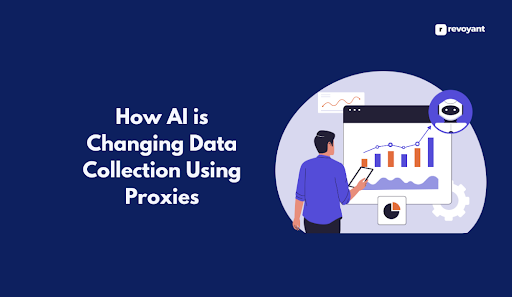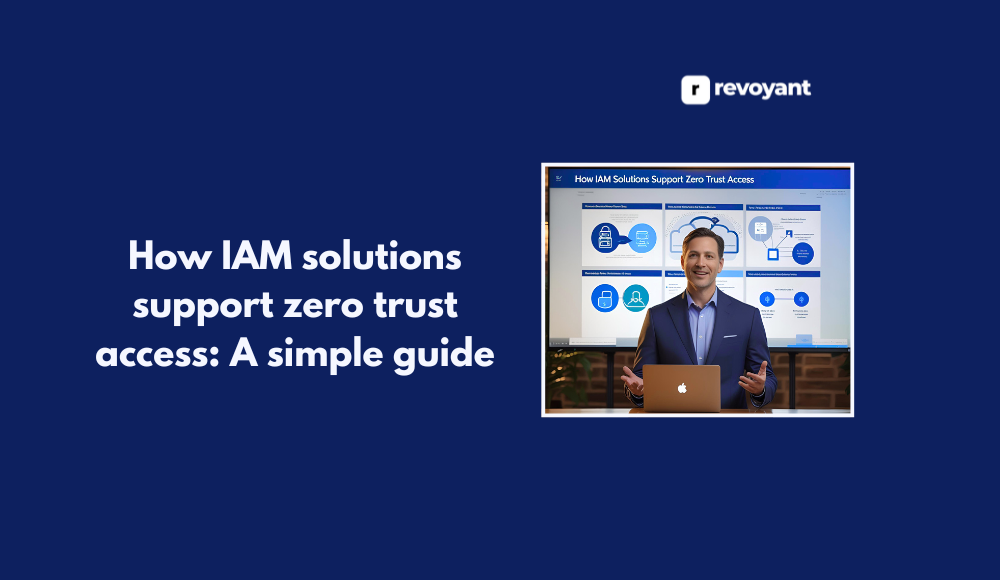Many people feel confused by how AI agents work, even though they use chatbots every day. It is easy to wonder what goes on behind the scenes. Did you know that large language models like ChatGPT or Google Gemini only answer when you ask a question? They also have limits with personal info and cannot remember anything about you after the chat ends.
This blog post will explain these ideas in simple steps so anyone can follow along and learn. Keep reading—by the end, you might see AI in a whole new way.
Key Takeaways
- AI assistants like chatbots fail to keep track of your information post-chat. They are informed from accumulated data until 2023 but have no knowledge of fresh inputs beyond that.
- AI agents come in diverse gradients. The rudimentary ones simply apply rules to obey instructions. More sophisticated ones, employing tools like RAG, perform an information search prior to their reply.
- An AI can be instructed to execute tasks by creating workflows. For instance, accumulating news links or preparing social media updates autonomously each dawn.
- An AI assistant improves through repetitive tasks and learning from blunders. This cycle is colloquially referred to as iterating.
- We have the ability to construct our rudimentary AI assistant with the appropriate instruments and procedures. This provides an opportunity for anyone to initiate their journey into artificial intelligence programming.
Levels of AI Agents
AI agents come in different types, each with its own strengths and weaknesses. Some use simple tools to process information, while others can handle more complex tasks and decisions.
Level One: Large Language Models (LLMs)
Large Language Models, or LLMs, use artificial intelligence to understand and create text. These models learn by reading lots of data from books, websites, and articles. I have seen examples like CHBT, Google Gemini, and Claude do well at tasks such as text generation and natural language processing.
They answer questions, correct grammar mistakes, draft emails, or help with information retrieval.
I type a prompt or request; the model uses its training to give a response. LLMs stay passive until someone asks them something specific. They cannot access private details or real-time personal data unless it is included in my prompt.
Their knowledge comes only from what they learned during training and stops at that point in time. Machine learning powers these tools so they can edit text quickly but still rely on clear human input each time.
Examples and workflow
After learning about Level One and its focus on Large Language Models, I can share how examples and workflows fit in this space. For instance, a person may ask me to draft an email or summarize data.
Tools like CHBT, Google Gemini, and Claude handle these jobs well because they use language modeling and deep learning.
I receive a human’s input through natural language processing. The LLM checks its huge training data, then crafts a response using machine learning skills. For example, if someone wants an automated response from a virtual assistant or needs quick text generation for work tasks, the model responds right away without extra steps.
CHBT gives answers within seconds based on patterns it learned during training up to 2023. This workflow is direct; person asks something, model studies the question against its knowledge base that sits in thousands of gigabytes of structured data from books or web pages collected by 2023, then writes simple replies as output using artificial intelligence methods like deep neural networks.
Limitations
AI agents like LLMs have restricted access to information. I cannot view confidential data, private files, or anything behind controlled access. My responses come only from public sources or data trained up until 2024.
If you ask about nondisclosure specifics or secure information, I will not provide it, because my training protects privacy and follows strict limits.
These systems do not act on their own and always need a prompt before they answer. For example, I wait for your question before sharing any reply; I cannot search limited content or learn from new private conversations unless allowed directly by the user and system settings.
Privacy protection means no personal details are shared unless made public by someone else first. Controlled information stays safe since AI agents stay within these boundaries at all times.
Level Two: AI Workflows
Level One agents have strict limits, so now I focus on Level Two: AI Workflows. By adding a layer of logic, I can make artificial intelligence do more with less guesswork. These workflows use control logic that humans set in advance.
This means the system follows only certain paths, like answering questions about schedules or setting reminders for specific tasks.
For example, if I ask this type of logic-based AI agent to find the weather for an event but did not set up that path ahead of time, it will fail. The workflow is not smart enough to think outside its rules.
This keeps decision-making fast and simple but also sets clear boundaries for what it can do. Tasks stay focused; there is little room for error or guessing because every step follows predefined choices made during setup.
Examples and limitations
I told an LLM to check my Google Calendar for personal events before giving any answer. It worked well, since the agent followed this set logic. Say I then asked it about the weather during one of those events; that failed, as “weather” was not in its set path.
These artificial intelligence and machine learning systems stick to what people program into them.
They can only follow a given workflow or rulebook made by humans, so they lack real-world decision making and problem solving like us. Natural language processing helps these intelligent agents talk with us, but control stays fixed unless changed by a person first.
For tasks outside their original plan, such as checking weather instead of just events on a calendar, they simply do not know what to do without new instructions from someone building or updating the automation steps.
Introduction of Retrieval Augmented Generation (RAG)
Retrieval Augmented Generation, or RAG, lets an AI model look things up before giving answers. Instead of using only what it already knows, the AI uses information retrieval to search a knowledge base or data source.
For example, if I ask the AI about new tech trends from 2024, it can find and pull details from recent articles or databases. This makes question answering much better because the answer is fresher and more accurate.
RAG works as part of an AI workflow. The process involves two main steps: first comes semantic search for relevant facts, then natural language processing creates helpful replies using that fresh context.
This system supports machine learning tasks like information extraction and strong contextual understanding. Using RAG helps me get smarter results from large sources instead of relying on memory alone.
Practical AI Workflow Example
I set up an AI workflow using make.com, following Helena Louu’s easy guide. First, I gather news article links in Google Sheets each day. Then, Perplexity reads and summarizes those articles for me.
Next, Claude gets a custom prompt to help draft LinkedIn and Instagram posts based on the summaries. Everything runs like clockwork with automation scheduling at 8 a.m., so I save plenty of time each morning.
If any post output feels off—like if there is too much humor in a LinkedIn update—I step in for manual intervention to adjust it myself. This setup covers daily automation tasks such as content summarization, news aggregation, and social media posts; but still gives me control over final tweaks when needed.
Key Takeaways
Exploring AI agents can seem tricky at first, but it gets easier with simple steps. I learned how AI models like chatbots grow into smart tools that act and think by themselves. Each level brings new skills, from simple text answers to making real choices on their own.
This guide gives anyone a clear path to start working with artificial intelligence. Now, I feel ready to build smarter and more helpful agents for any task ahead.
The Transformation into an AI Agent
An AI agent learns to make decisions, solve problems, and grow from experience. This process turns simple code into something that can think and act on its own, making it exciting to see what comes next.
Reasoning
AI agents must use reasoning to finish tasks well. I see logic at work as the system sorts choices and picks one that saves time or effort. Say, I want a set of news links fast; the agent runs through options, checks sources, and compiles only useful articles.
This includes decision making, problem solving, critical thinking, and analytical thinking — all done step by step.
I notice how cognitive processing guides each move too. The agent uses deductive reasoning to cut out errors and applies inductive reasoning when new patterns come up in fresh data.
Cognitive reasoning kicks in during tricky steps where rules do not fit every task neatly. Rationalization helps it pick tools or actions that make sense right now for my request. The whole process feels sharp and efficient from start to end.
Acting
After a clear step in reasoning, I move into acting. This is the point where an AI agent performs real actions and does tasks using outside tools. For example, I can link news articles straight into Google Sheets for easy tracking.
Sometimes, I use Perplexity to summarize big blocks of text so they are quick to read.
Copywriting with Claude lets me produce new content fast and well. Here, you see an AI embodying different roles—summarizing facts one moment while writing catchy headlines the next.
Acting means executing steps such as enacting workflows or assuming control over simple tasks that humans once did by hand. With these skills, the system shifts from just representing information to actually doing work through active roleplaying and performing each task right away.
Iterating
Iterating means making tasks better through cycles of refinement, revision, and improvement. I can rewrite a LinkedIn post many times, each time checking it against best practice criteria.
To enhance the content further, I use another language model for critique and feedback. This process helps with modification, optimization, and advancement every step of the way.
With each round of enhancement or revision, my AI agent grows smarter through development and evolution. The outputs show clear progression in quality as I learn from past tries and improve on mistakes.
This method lets me create more useful responses over time without stopping after just one attempt at a problem or task.
The REACT framework
I use the REACT framework to help an AI agent reason, act, and repeat steps until it finds a good answer. This process combines cognitive reasoning with decisionmaking. The agent thinks about a problem, then chooses an action based on what it knows.
With each try, I watch how the agent acts and learn from its results. This creates behavioral feedback for better problem solving and adaptive learning over time. Many intelligent agents follow this simple loop as part of their design in autonomous systems today.
Real-World Example
Andrew, a well-known name in artificial intelligence, built a demo website to show how an AI agent works. This tool reasons about what a skier looks like by using smart search methods and then acts to find video clips of skiers from large collections.
The system starts by identifying important details about skiers, like their gear or movements. After that, it searches through videos and indexes them so that only the most relevant clip appears first.
This AI agent does more than just simple matching. It uses reasoning to decide which video fits best with the idea of “skier,” not just the keyword alone. Each step shows clear acting—searching for data, finding useful parts, indexing results—and delivers helpful content fast.
Andrew’s example makes complex technology easy for people who want real answers without extra effort or guesswork.
Author’s AI Agent Development
Right now, I am building a basic AI agent using Nan technology. My goal is to learn and share simple development steps, so many more people can try artificial intelligence programming.
I like hearing from readers too. Drop your suggestions for future tutorials or topics about AI agent development. Engagement helps me shape better lessons that fit what you want to know about learning, coding agents, or new ideas in nan technology.
Conclusion
AI agents do much more than just answer questions. I see them as smart helpers that can think, act, and learn on their own. Starting with chatbots is easy; building workflows adds more power.
Turning these tools into full AI agents opens up many new jobs they can do for us. Each step brings me closer to using Artificial Intelligence in smarter ways every day.
FAQs
1. What are AI agents?
AI agents, or artificial intelligence agents, are systems that can perceive their environment and take actions to achieve specific goals.
2. How does an AI agent function?
An AI agent functions by continuously interacting with its environment. It perceives the surroundings, interprets the data, makes decisions based on this interpretation, and then acts accordingly to fulfill its programmed objective.
3. Can anyone explore AI Agents?
Absolutely! There is a wealth of resources available for everyone interested in exploring AI agents; from simple guides for beginners to more advanced materials for those looking to delve deeper into this fascinating field.
4. Why should I learn about AI Agents?
With the increasing integration of artificial intelligence in our daily lives and industries globally, understanding how these systems work will help you adapt better to this evolving digital landscape.




